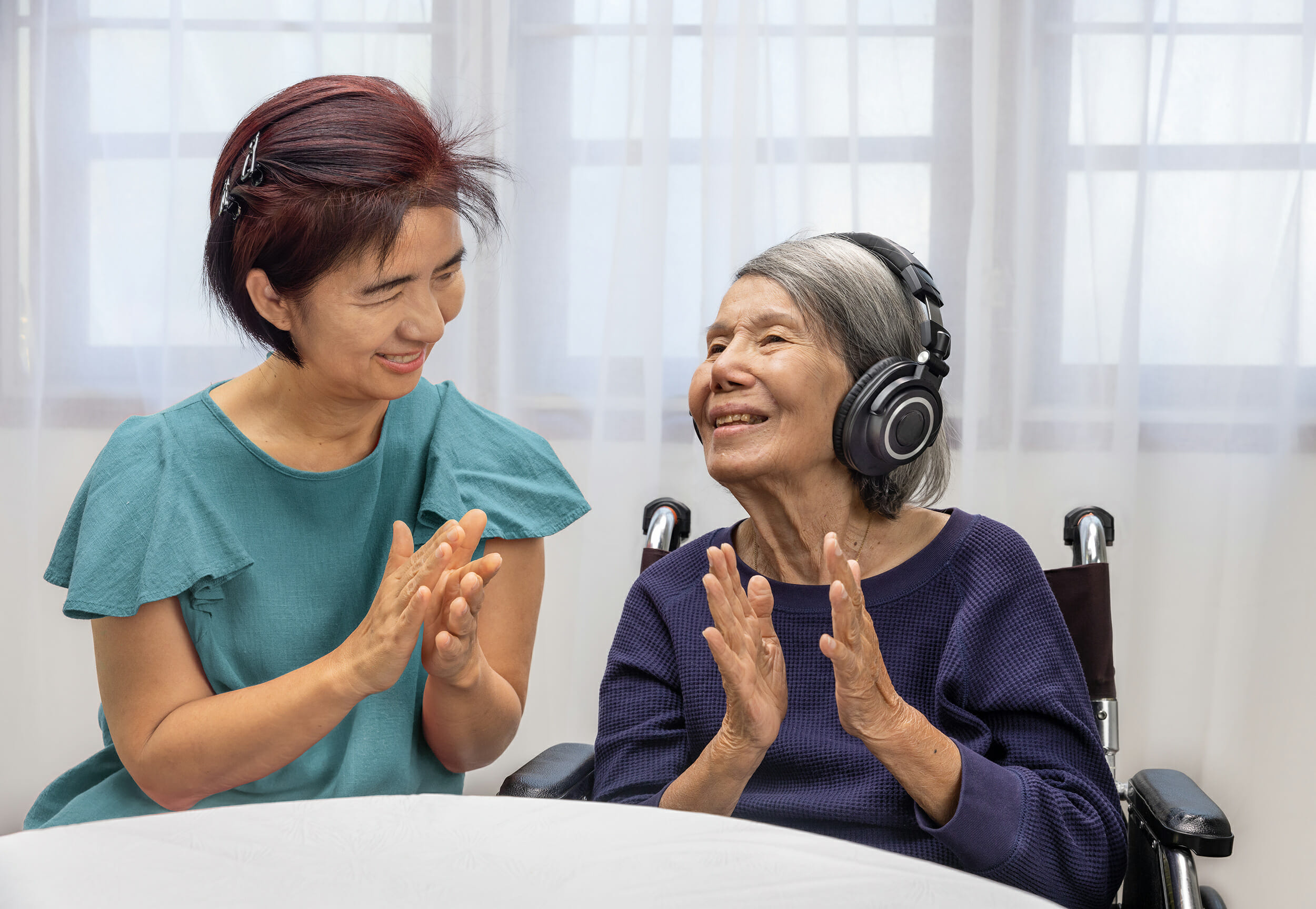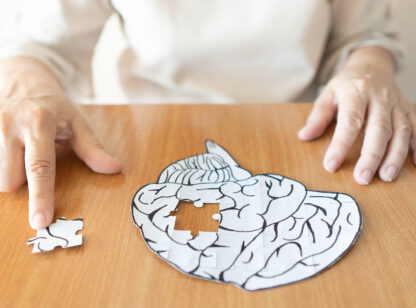For many years, there has been a growing recognition that art and music can contribute meaningfully to the quality of life of persons with Alzheimer’s. Music has been shown to reduce anxiety, depression, and to some extent, behavioral symptoms that when unmitigated often lead to the use of antipsychotic medication or other sedatives. Art therapies tap into the part of the brain that are less dependent on speech and language, making those activities more stimulating and activating without triggering the frustration and embarrassment people with dementia feel when language fails them.
The magic of music

Possibly the most promising therapy for individuals with dementia and Alzheimer’s is music. Music, especially familiar music, has the ability to evoke strong emotions and memories. Even for people with advanced dementia (loss of memory and language), music can unlock old memories. When played music they once knew, especially songs they used to sing, Alzheimer’s patients will start to smile, sometimes keep time and even sing or hum. Music increases social activities, boosts brain activity, improves mood and lowers stress. According to Katherine Campbell, MA, a musician and facilitator of “Tunes for the Memory” at Alzheimers Coachella Valley, “Music is the magic potion to extending moments of joy when memories fade and a person’s life, and how to live, disappear.”
Creative freedom in art
Visual art allows individuals with dementia to engage and communicate with others, even as their condition progresses. Drawing or painting with easy-to-use implements gives those affected the freedom to create and express themselves without words; they can communicate a whole world with shapes and colors, providing a sense of accomplishment. The “completed art project” serves as a tangible reminder of a feeling, emotion or memory. Art therapy also stimulates communication and the senses, builds confidence and self-esteem, provides much needed connection between the person with dementia and loved ones and increases concentration.
Creating art and making music provide the opportunity for family members and their loved ones to communicate, share memories and stay engaged with each other.
While there is no known cure for Alzheimer’s, there are many proven ways to treat symptoms and problems associated with the disease. Research shows that art and music therapies help those affected maintain a better quality of life, while slowing the progression of the disease. To decide which therapy would work best for your loved one (it is possible both may be helpful) think about their past hobbies or passions. Talk with their doctor as he/she may have suggestions and resources for using music and art therapies effectively.
Editorial by Patricia Riley, board member of Alzheimers Coachella Valley, a community resource for dementia support and education. For more information, call (760) 776.3100 or visit www.cvalzheimers.org.














































Comments (0)